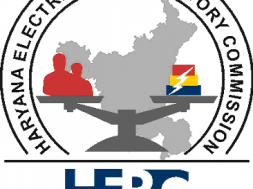
One Size Does Not Fit All In EV Charging – EQ Mag Pro
EV Connect CEO, Jordan Ramer, has led finance, business and product strategy at companies in clean energy, transportation and efficiency.
Nobody buys an 18-wheeler for around-town errands, nor does anyone use compact cars to transport bulk goods. One size does not fit all with automobiles, and the same idiom applies to EV charging infrastructure. With the emergence of many new regulations and incentives promoting electric transportation, EV charger installations must meet the varied fueling needs of EV drivers and respect the constraints of energy production, physical charging sites and site hosts’ budgets. A thoughtful segmentation of EV charging needs is essential to building viable charging infrastructure at scale. This must include an intelligent mix of charging speeds.
The assumption that DC fast charging (DCFC) is the definitive solution to building out the infrastructure needed to support the surge of EVs on our roads is as flawed as the widespread assumption that all EV owners must have L2 chargers at home. Although DCFC is a vital component of the EV charging ecosystem, it is only one element of a constellation of solutions. With multiple use cases and performance levels, charging sites must be approached with an application-specific mindset. A pragmatic and realistic understanding of EV charging needs must include insights into the individual needs and constraints of site owners, service providers, network operators and the drivers those stations will serve.

In broad terms, there are three types of EV chargers: Level 1 AC (L1), Level 2 AC (L2) and Level 3 (DC Fast Charging, or DCFC for short).
• L1 charging is most widely used in residential locations, offering the smallest range per hour (RPH) and supplying average power output of 1-1.4 kW. Most L1 chargers are found in consumers’ garages and carports and take between 8-12 hours to produce a full charge.
• L2 charging is faster, taking between 4-6 hours to fill the battery of an average passenger EV. L2 chargers have a power output of anywhere between 3.3-19.2 kW. They are predominantly found at commercial charging sites like restaurants, multi-unit dwellings or hotels. While they are charging, drivers can eat, meet, sleep or run errands.
• DCFC charging is designed to fill a battery to 80% in 10-40 minutes of charging. DCFC charging systems typically cost more and require more involved utility service upgrades. DCFCs are suited for high-volume sites, commercial fleet lots or locations with shorter linger times.
After decades of gasoline-powered automobile travel, the traditional gas station experience is ingrained in drivers’ minds. The “bigger is better” sentiment around DCFC originates, in part, in a desire to replicate the conventional gas station experience: Getting a full tank should be fast, convenient and reliable. Historically, EV sales and the buildout of charging infrastructure have been plagued by legacy perception issues.
Most notable of these issues is the fear of becoming stranded without a charging station nearby, commonly called “range anxiety.” While not entirely unreasonable depending on where one lives, range anxiety comes from a combination of the uncertainty about the availability of EV charging infrastructure and drivers’ chronic over-estimation of the amount of energy required for a given drive.
Even as an EV industry veteran, I initially fell prey to the overestimation problem. When I bought my first EV in 2010, I invested in an L2 charger because I felt I had to have the highest possible charging performance at home. Several years later, when my family and I purchased our new home and our second EV, I initially intended to upgrade the existing L1 system to L2.
However, I have found that we can comfortably charge both family EVs on the more modest 110v L1 charger when augmented by workplace, other destinations and the occasional fast charging. Today, whenever friends ask if they need an L2 for at-home charging, I suggest they try L1 first to see their real usage.
Therefore, leveraging real-world data and experience can yield an honest and realistic assessment of charging needs and remove uncertainty around charge station selection for businesses. For EV charging deployment to be successful over the long-term, the equipment and specifications must be designed to fit individual sites’ use cases, budgets and physical requirements, which necessarily include an understanding of what the customer wants, what is possible on the site and how much the site owner is willing to invest.
Unlike petrochemical-powered vehicles, EVs can be fueled nearly anywhere with utility service—at home, at work, while shopping or any time a car is parked—without the hefty environmental rules, regulations or restrictions to which gas stations are subject. Charging also opens myriad opportunities to generate incremental revenue. Retailers can entice new customers to visit their locations and keep customers in stores longer while charging. Restaurants can offer free charging for diners or, conversely, offer food discounts to customers who pay to charge. Valet services can cycle customers’ EVs on and off chargers as patrons attend a ballgame or a concert and so on.
L2 stations have significant advantages for smaller businesses because of lower-cost equipment and less disruption required to install lower-powered charging stations. DCFC becomes practical and economical for locations that support the needs of extended travel drivers and fleet charging, for example.
Although DCFC is vital to serving EV transportation at scale, it must be seen as a component of the mosaic of solutions required in the charging ecosystem. A hierarchical EV infrastructure with segmentation according to varying charging speeds and a broad selection of equipment is essential for the health and growth of the EV ecosystem at large. There is no one-size-fits-all solution to meeting the charging demands ahead, so only a deep understanding of the segmentation of the market and its requirements will drive adoption and healthy growth.
















